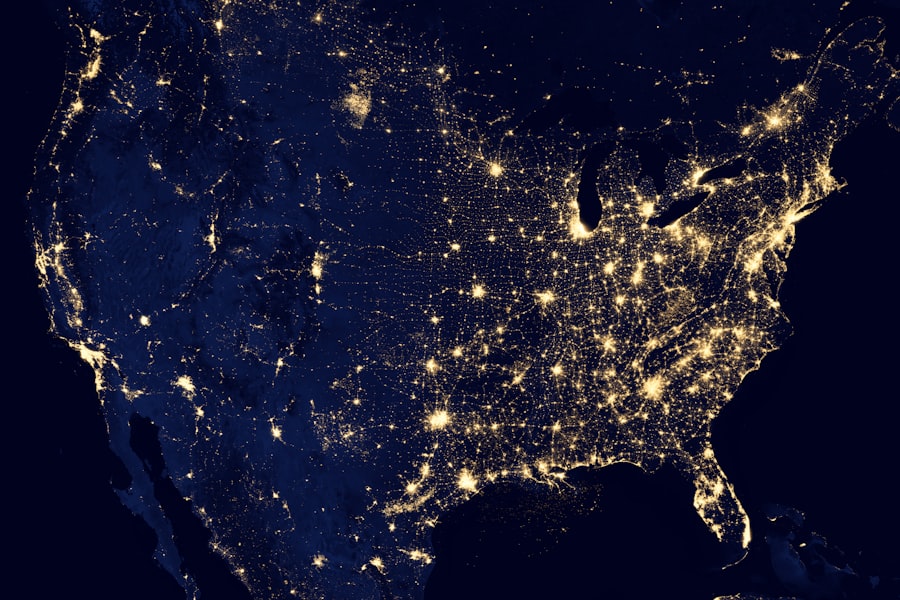In the rapidly evolving landscape of artificial intelligence and machine learning, Amazon Forecast stands out as a powerful tool designed to enhance demand forecasting capabilities for businesses across various sectors. Launched as part of the Amazon Web Services (AWS) suite, this service leverages advanced machine learning algorithms to predict future demand based on historical data. By utilizing a combination of time series data and additional contextual information, Amazon Forecast enables organizations to make informed decisions that can significantly impact their operational efficiency and profitability.
The significance of accurate demand forecasting cannot be overstated. In an era where consumer preferences shift rapidly and market dynamics are in constant flux, businesses must adapt quickly to maintAIn a competitive edge. Amazon Forecast provides a robust solution that not only simplifies the forecasting process but also enhances its accuracy.
By harnessing the power of AWS’s extensive infrastructure and machine learning capabilities, companies can now forecast demand with unprecedented precision, allowing them to optimize inventory levels, streamline supply chains, and ultimately improve customer satisfaction.
Key Takeaways
- Amazon Forecast is a machine learning service that helps businesses improve their demand forecasting accuracy.
- Using Amazon Forecast can lead to improved inventory management, better resource planning, and increased customer satisfaction.
- Amazon Forecast automates time series analysis by using machine learning algorithms to identify patterns and make accurate predictions.
- Integrating Amazon Forecast with existing data and systems can be done through APIs and SDKs, allowing for seamless integration with business processes.
- Case studies show successful implementation of Amazon Forecast in various industries, leading to improved forecasting accuracy and operational efficiency.
Benefits of Using Amazon Forecast for Demand Forecasting
Amazon Forecast: Revolutionizing Predictive Analytics with Unparalleled Accuracy
Overcoming the Limitations of Traditional Forecasting Methods
Traditional forecasting methods often rely on simplistic statistical models that may not capture the complexities of real-world data. In contrast, Amazon Forecast employs sophisticated machine learning techniques that analyze vast amounts of historical data, identifying patterns and trends that may not be immediately apparent.
Accurate and Adaptable Forecasts for Informed Decision-Making
This results in forecasts that are not only more reliable but also adaptable to changing market conditions. Moreover, Amazon Forecast is designed to be user-friendly, making it accessible to organizations regardless of their technical expertise. The service provides a straightforward interface that allows users to upload their data and generate forecasts with minimal effort.
Democratizing Access to Advanced Forecasting Technology
This democratization of advanced forecasting technology empowers businesses of all sizes to leverage data-driven insights without the need for extensive data science resources. As a result, companies can focus on strategic decision-making rather than getting bogged down in complex analytical processes.
How Amazon Forecast Automates Time Series Analysis

At the heart of Amazon Forecast’s capabilities lies its automation of time series analysis. Time series forecasting involves predicting future values based on previously observed values, a task that can be both time-consuming and complex when done manually. Amazon Forecast streamlines this process by automatically selecting the most appropriate algorithms for the given dataset, ensuring that users benefit from the best possible predictive models without needing deep expertise in machine learning.
The automation extends beyond algorithm selection; Amazon Forecast also handles data preprocessing tasks such as cleaning, normalization, and feature engineering. This means that users can input raw data without worrying about the intricacies of preparing it for analysis. The service intelligently identifies relevant features and transforms the data into a format suitable for modeling.
This level of automation not only saves time but also reduces the likelihood of human error, leading to more accurate forecasts.
Integrating Amazon Forecast with Existing Data and Systems
| Data/Metric | Description |
|---|---|
| Forecast Accuracy | The measure of how well the forecasted values match the actual values. |
| Integration Time | The time taken to integrate Amazon Forecast with existing data and systems. |
| Data Compatibility | Evaluation of how well the existing data and systems can be integrated with Amazon Forecast. |
| System Downtime | The amount of time the existing systems are unavailable during the integration process. |
Another significant benefit of Amazon Forecast is its ability to seamlessly integrate with existing data sources and systems. Businesses often operate within complex ecosystems that include various databases, applications, and platforms. Amazon Forecast is designed to work harmoniously within these environments, allowing users to pull in historical data from multiple sources effortlessly.
For instance, organizations can integrate Amazon Forecast with their customer relationship management (CRM) systems, enterprise resource planning (ERP) software, or even external data sources such as market trends and economic indicators. This capability enables businesses to enrich their forecasting models with diverse datasets, leading to more comprehensive insights. By combining internal sales data with external factors like seasonality or promotional events, companies can create more nuanced forecasts that account for a wider range of influences.
Case Studies: Successful Implementation of Amazon Forecast
Numerous organizations have successfully implemented Amazon Forecast to enhance their demand forecasting processes, showcasing its versatility across different industries. For example, a leading retail chain utilized Amazon Forecast to optimize its inventory management system. By analyzing historical sales data alongside promotional calendars and local events, the retailer was able to predict demand more accurately during peak shopping seasons.
This resulted in reduced stockouts and overstock situations, ultimately improving customer satisfaction and increasing sales. In another case, a global manufacturing company turned to Amazon Forecast to streamline its supply chain operations. By integrating production schedules with demand forecasts generated by the service, the company was able to align its manufacturing processes more closely with actual market needs.
This proactive approach not only minimized waste but also enhanced overall operational efficiency. These case studies illustrate how diverse organizations can leverage Amazon Forecast to drive tangible business outcomes through improved demand forecasting.
Best Practices for Utilizing Amazon Forecast

To maximize the benefits of Amazon Forecast, organizations should adhere to several best practices when implementing the service. First and foremost, it is crucial to ensure that the historical data used for forecasting is clean and representative of actual market conditions. Inaccurate or incomplete data can lead to misleading predictions, undermining the effectiveness of the forecasting process.
Additionally, businesses should consider incorporating external factors into their forecasting models whenever possible. By enriching internal datasets with relevant external information—such as economic indicators or industry trends—organizations can create more robust models that account for a broader range of influences on demand.
Potential Challenges and Limitations of Amazon Forecast
While Amazon Forecast offers numerous advantages, it is not without its challenges and limitations. One potential hurdle is the reliance on historical data quality; if the input data is flawed or inconsistent, it can significantly impact the accuracy of forecasts. Organizations must invest time and resources into ensuring that their historical datasets are comprehensive and reliable before utilizing them in Amazon Forecast.
For instance, during global crises or unexpected economic downturns, traditional forecasting models—including those powered by machine learning—may falter due to the absence of relevant historical data. Businesses must remain vigilant and supplement automated forecasts with human insights and expertise during such unpredictable times.
Future Developments and Trends in Demand Forecasting with Amazon Forecast
Looking ahead, the future of demand forecasting with Amazon Forecast appears promising as advancements in artificial intelligence continue to evolve. One notable trend is the increasing integration of real-time data into forecasting models. As businesses become more adept at capturing real-time information from various sources—such as social media sentiment or online shopping behavior—Amazon Forecast may evolve to incorporate these dynamic datasets into its predictive algorithms.
Additionally, as machine learning techniques advance further, we can expect even greater accuracy in demand forecasting models. Innovations such as deep learning and reinforcement learning may enhance the service’s ability to identify complex patterns within vast datasets, leading to more precise predictions. Furthermore, as organizations increasingly prioritize sustainability and ethical practices, future developments may also focus on incorporating environmental factors into demand forecasting models.
In conclusion, Amazon Forecast represents a significant leap forward in demand forecasting technology, offering businesses a powerful tool to navigate the complexities of modern markets. By automating time series analysis and integrating seamlessly with existing systems, it empowers organizations to make informed decisions based on accurate predictions. While challenges remain, the potential for future developments in this space promises exciting opportunities for businesses looking to enhance their forecasting capabilities further.
Amazon Forecast is a powerful tool for demand forecasting, time series analysis, and planning optimization, leveraging automated modeling to enhance accuracy and efficiency in predicting future trends. For those interested in understanding the broader implications of advanced technologies like Amazon Forecast, the article on the economic and social impacts of the metaverse provides valuable insights. You can read more about it here: Metaverse and the Real World: Economic and Social Impacts. This connection highlights how innovative forecasting methods can play a crucial role in navigating the complexities of emerging digital landscapes.
FAQs
What is Amazon Forecast?
Amazon Forecast is a fully managed service that uses machine learning to deliver highly accurate forecasts. It combines time series data with additional variables to build forecasts for a wide range of use cases, including demand forecasting, inventory planning, and workforce planning.
What are the key features of Amazon Forecast?
Some key features of Amazon Forecast include automatic model training, support for custom datasets, the ability to incorporate related time series and categorical data, and the ability to easily export forecasts to Amazon S3.
What are the benefits of using Amazon Forecast?
Using Amazon Forecast can help businesses improve forecast accuracy, reduce forecasting time, and optimize resource allocation. It can also help businesses make more informed decisions by providing reliable predictions for future demand and other time series data.
What are some common use cases for Amazon Forecast?
Common use cases for Amazon Forecast include demand forecasting for retail and e-commerce, capacity planning for cloud computing resources, workforce planning for human resources, and inventory planning for supply chain management.
How does Amazon Forecast use machine learning to generate forecasts?
Amazon Forecast uses machine learning algorithms to automatically train models based on historical time series data and related variables. It then uses these models to generate accurate forecasts for future time periods.
What types of businesses can benefit from using Amazon Forecast?
Businesses in a wide range of industries can benefit from using Amazon Forecast, including retail, e-commerce, manufacturing, logistics, finance, and healthcare. Any business that relies on accurate forecasts for time series data can benefit from using Amazon Forecast.











Leave a Reply